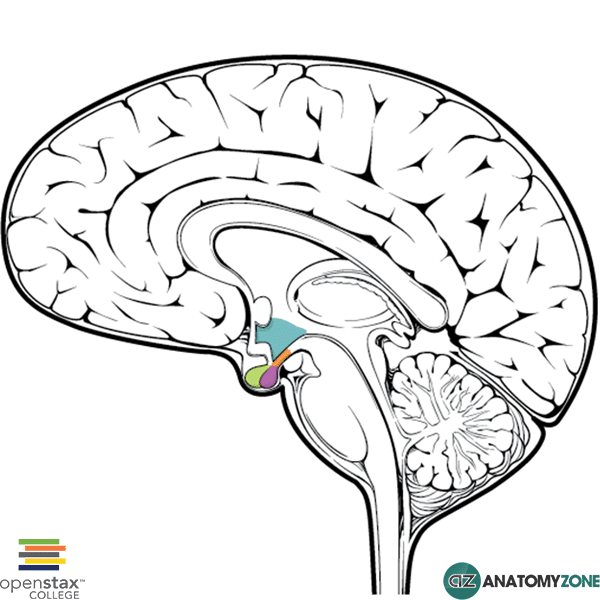Posterior Pituitary
The structure highlighted in purple is the posterior pituitary.
The pituitary gland is a pea-sized endocrine gland located within the hypophyseal fossa of the sphenoid bone in the middle cranial fossa.
The pituitary gland extends from the hypothalamus (highlighted in blue) and can be divided into:
1) Anterior pituitary (highlighted in green)
2) Posterior pituitary (highlighted in purple)
The two parts of the pituitary have different embryological origins. The anterior pituitary develops from ectoderm from an area of the pharynx known as Rathke’s pouch, whereas the posterior pituitary arises from neuroectoderm, as an extension of the hypothalamus.
The anterior pituitary releases the following hormones
- Adrenocorticotropic hormone (ACTH)
- Thyroid-stimulating hormone (TSH)
- Follicle-stimulating hormone (FSH)
- Luteinizing hormone (LH)
- Growth hormone (GH)
- Prolactin (PRL)
The posterior pituitary releases:
- Antidiuretic hormone/Vasopressin (ADH)
- Oxytocin
